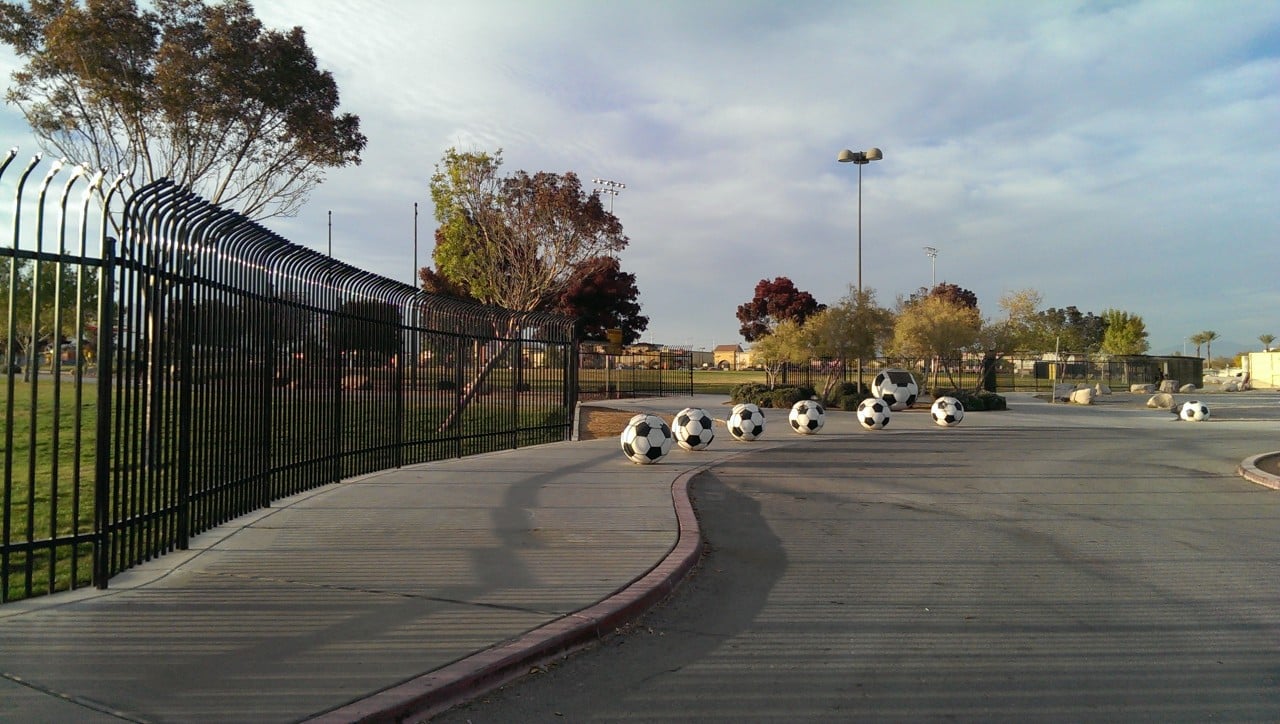Walls and Bridges
People are lonely because they build walls instead of bridges — and too many fences around public parks.
There’s a park up the street. It used to be accessible to everyone, from anywhere — just as parks should be.
Now, the park has a giant fence around it.
But this is no typical fence. It’s constructed of thick iron bars. It has sharp spikes on top, the type that would puncture someone were they foolish enough to try and climb over. It’s intimidating, the kind one expects to see around a prison. It’s designed strictly for one purpose, which is to keep people out.
My question is — why?
Why build a massive fence around a city park, presumably a gathering place for people of all ages to come and enjoy the outdoors?
Madness.
For the past ten years since I’ve lived in The Lakes section of Las Vegas, Desert Breeze Park — which is right up the street — had no fence around it. There were no problems. Ever. No vagrancy. No crime. Nothing that would instigate a call for making any changes. I ran through this park on many occasions. Most of the time, the grassy fields were empty except for a few kids kicking a ball, or perhaps a family with a dog fetching a frisbee. On weekends, the lawn became filled with children, playing soccer and football. Day or night, the park is a joyous sight and a happy place to be.
During the holidays, we came out and sat in the park on lawn chairs. We sometimes watched the fireworks. We met with our friends and neighbors. The park was a social and recreational center, an oasis of green in an otherwise brown desert city.
There never seemed to be a reason to build a fence, at all. People came to the park and enjoyed the fields during all hours of the day. At night, teenagers who would probably otherwise be hanging out on the streets doing who knows what played basketball. During the summertime, the basketball games sometimes lasted late into the night. That seemed like a good thing to me. A positive thing for the community. Kids need parks and playgrounds when they’re growing up. Don’t they?
Think of it this way. What are the places known for building the most walls? Answer — North Korea. China. Palestine (the Occupied Territories). East Berlin. South Africa under Apartheid. Fences sure were common in all of those places. But most nations don’t build walls. Our state borders aren’t fenced off. So, if most states and nations don’t need barriers, then why are there so many in our neighborhoods?
Fences are designed with two purposes in mind — privacy and security. We build fences to provide ourselves a sanctuary and to keep out danger. Indeed, there are valid reasons that we need fences.
But around city parks?
Why build a massive iron wall around a public place where there’s nothing at all to protect and where no danger exists? What is the fence designed to protect? What is there to steal? Sprinkler heads? Why would we keep people out of this place, and for what reason? Do we really want to close the park down and force the kids playing basketball back out on the streets? What good will that do?
It just doesn’t make sense.
Moreover, consider the cost. This is no cheap fence. It must have cost a bundle. The fence is perhaps a quarter-mile long on each side, which by my estimation means this monstrosity is about two miles long. What in the hell was someone thinking? Put another way, was anyone thinking at all about such an utterly unnecessary waste of tax money?
There’s an old saying that people are lonely because they build walls instead of bridges. How true.
We have too few bridges and too many walls. And too many fences around public parks.












Could be someone thought competitive fencing would be a good thing to offer at the the park and was misunderstood?
Please do not question the wisdom of this government decision. It was made in the best interests of the people. No one ever said “If you like your park you can keep it.” “Period.” Besides, it will make a convenient outdoor storage facility for the uncooperative.
Based upon the height and the curve of the top, I will take a guess that it was built to try to keep wild animals out of the park such as coyotes. Coyotes can jump very high and the curvature at the top will prevent them from grabbing on to the top and jumping over. It is not as crazy as you think actually. There may be openings to allow people in at certain points and yes animals could get in that way but that allows only certain areas to be watched. Also in the perpetual state of paranoia that is the USA, the fence serves a double purpose to eliminate random pedophiles from abducting kids all along the boundaries of the park and forces these people to go through a managed opening thus increasing the possibility of being seen. I know my comment rings of paranoia but if you dig and do some research, I am willing to bet that these two reasons were at least some of the motivating factors or putting up that fence.
I can understand having a fence put up along the busy stretch of road near Durango and Desert Inn. But it does seem a bit silly and UGLY! Maybe they were going for a prison yard theme ,to make newly released convicts feel comfortable when they go to the park.
LOL, this is joke if i’ve ever seen one.
The fence was put in place to protect the area as it is a dual purpose park. It serves as a storm water runoff with a giant storm drain seen in the bowl area of the park
The storm drain is huge, and if there is enough storm water the area gets full and the height of the water can be several feet deep (20-25ft). This poses a danger to both adults, and children.
Its the only time that the doors are locked, as people are still free to enter the park late at night to cool off during summer nights.
NOLAN REPLIES:
Yet for some reason, the park was there for 20 years, with no problems. So, despite a drought and perhaps a situation where the water fills up the basin maybe, and that’s MAYBE once every five years, they blew a ridiculous amount of money constructing an unnecessary fence. This is the lowest possible priority given the many NEEDS of this city.
I stand by the article 100 percent. But thanks for sharing an opinion.
— ND